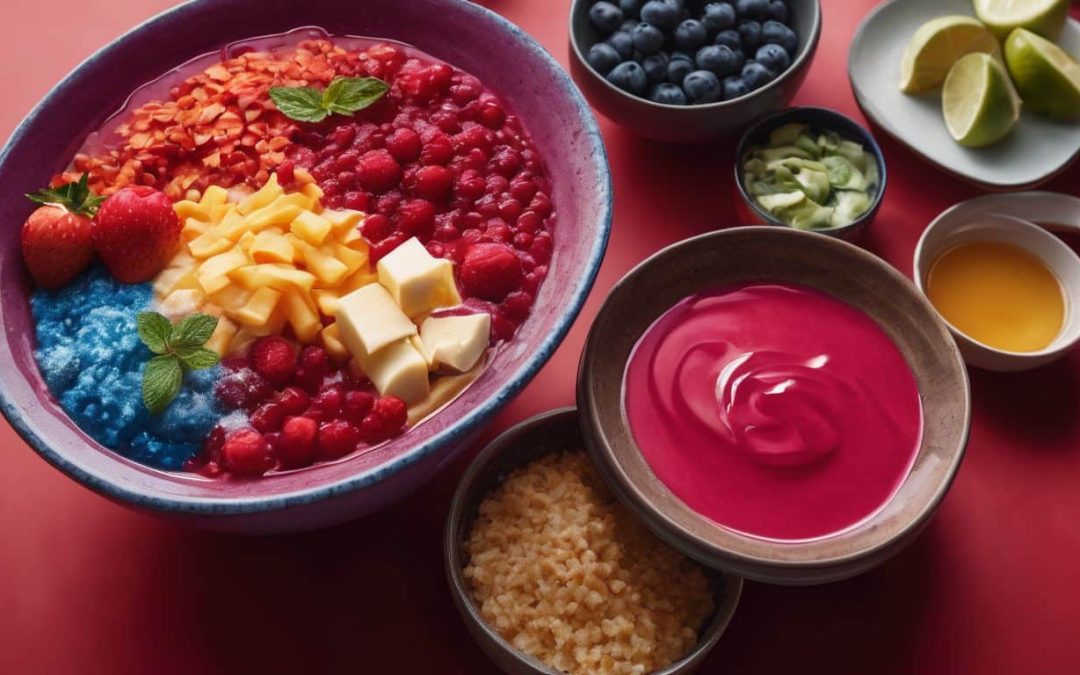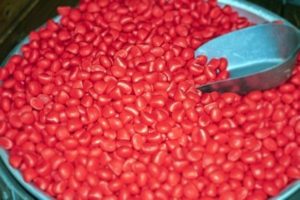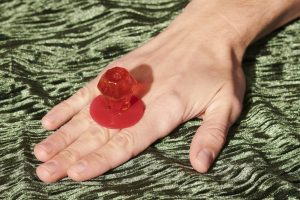Red Dye 40 is a common food coloring found in many processed foods, but it can have adverse effects for some people. If you’re looking to make healthier choices or avoid potential reactions, knowing which Red Dye 40 foods to avoid is essential for a better diet and well-being.
Common products containing Red Dye 40 include candies (like gummy bears, Skittles, and licorice), sodas, energy drinks, flavored gelatin, cereals, and baked goods. It’s also found in processed snacks, ice creams, and even some medications and vitamins, especially those marketed to children. Reading labels carefully is essential, as it may appear under names like “FD&C Red No. 40” or “Allura Red AC.”
To avoid Red Dye 40, choose naturally colored or dye-free alternatives. Opt for whole, unprocessed foods such as fresh fruits, vegetables, and homemade meals. Many companies now produce natural or organic products without synthetic dyes, often using colorings derived from beet juice, turmeric, or paprika. Always check ingredient lists to ensure products align with your dietary preferences or health needs.
Importance of understanding food dyes and their potential health impacts.
Understanding food dyes and their potential health impacts is essential for making informed dietary choices. Food dyes are artificial or natural substances added to food and beverages to enhance their color, making them more appealing. While they may improve the visual appeal of products, their effects on health warrant careful consideration. Below is why this understanding is crucial:
- Prevalence in the Modern Diet
- Widespread Use: Artificial food dyes are commonly found in processed foods, snacks, candies, sodas, and even products marketed as “healthy,” such as certain cereals and yogurts.
- Targeted at Children: Many dyed products are aimed at children, whose developing bodies may be more sensitive to these substances.
- Health Concerns Linked to Artificial Dyes
- Allergic Reactions: Certain dyes, like Yellow 5 (tartrazine) and Red 40, have been linked to allergic responses, including skin rashes, asthma, and hives.
- Behavioral Issues: Studies suggest a potential link between artificial dyes and hyperactivity or attention issues, especially in children with conditions like ADHD.
- Potential Toxicity: Some dyes, such as Blue 1 and Red 3, have been associated with adverse effects in laboratory studies, including toxicity to cells and possible carcinogenicity.
- Gut Health Impact: Emerging research shows that artificial dyes may disrupt gut microbiota, potentially impacting digestion and immunity.
- Regulatory and Safety Issues
- Approved vs. Banned Dyes: Some dyes approved in one country may be banned in others due to health concerns. For instance, the EU requires warning labels on foods containing certain dyes, whereas they are freely used in the U.S.
- Lack of Transparency: Many consumers are unaware of the dyes present in their food because they are often listed under generic terms like “artificial colors.”
- Natural Alternatives
- Natural Dyes: Substances like beet juice, turmeric, spirulina, and paprika are increasingly used as natural alternatives. These are generally considered safer but may not always produce the same vivid colors.
- Nutritional Benefits: Some natural dyes offer additional nutritional benefits, such as antioxidants in anthocyanins (from purple and blue plant-based sources).
- Role of Consumer Awareness
- Reading Labels: Understanding the ingredients in food allows consumers to make choices aligned with their health priorities.
- Advocating for Change: Informed consumers can push for regulatory changes and increased use of natural alternatives in food production.
- Protecting Vulnerable Populations
- Children and Sensitive Individuals: Being aware of the risks helps protect children, the elderly, and individuals with specific health conditions from potential adverse effects.
- Ethical and Environmental Implications
- Production Impact: The manufacture of synthetic dyes often involves petrochemicals, which can have environmental consequences.
- Corporate Responsibility: Awareness can encourage companies to adopt cleaner, safer, and more sustainable practices.
While food dyes enhance the visual appeal of products, they may pose significant health risks. Balancing their use with the potential for adverse effects is key. By understanding the potential health impacts of food dyes, consumers can make better choices, advocate for safer alternatives, and encourage industry-wide transparency and innovation.
Potential Health Effects of Red Dye 40
Red Dye 40, also known as Allura Red AC, is one of the most commonly used synthetic food colorings. It is derived from petroleum and is found in various processed foods, beverages, medications, and cosmetics. While it is approved for use in many countries, ongoing debates surround its safety due to potential health concerns. Here’s a detailed look at its potential health effects:
- Allergic Reactions
- Symptoms: Red Dye 40 has been associated with allergic reactions in sensitive individuals. Symptoms may include hives, itching, swelling, and respiratory issues such as asthma exacerbations.
- Cross-Reactivity: People allergic to aspirin or with sensitivity to salicylates may be more prone to reactions from Red Dye 40.
- Behavioral Effects
- Hyperactivity in Children: Some studies have linked Red Dye 40 to hyperactivity and attention difficulties, particularly in children with Attention-Deficit/Hyperactivity Disorder (ADHD). This has prompted regulatory measures in some countries, such as the European Union, where warnings are required on products containing certain dyes.
- Mood Changes: Anecdotal reports suggest the dye may contribute to mood swings or irritability in some individuals.
- Gut Health Concerns
- Microbiome Disruption: Preliminary research indicates that synthetic dyes, including Red Dye 40, might alter gut microbiota, potentially impacting digestion and immune function.
- Inflammatory Response: Some studies suggest that Red Dye 40 may trigger inflammatory responses in the gut, although more research is needed to confirm this.
- Cancer Risk
- Animal Studies: High doses of Red Dye 40 have been associated with tumor growth in animal studies, raising concerns about its carcinogenic potential. However, these findings are controversial and may not directly translate to typical human consumption levels.
- Regulatory Stance: While current evidence does not conclusively show that Red Dye 40 causes cancer in humans, ongoing research continues to assess its long-term safety.
- Impact on Immune Function
- Histamine Release: The dye may prompt the release of histamine in certain individuals, leading to inflammatory or allergic responses.
- Immune Modulation: Some studies have suggested that artificial dyes could influence immune activity, but these findings require further validation.
- Neurodevelopmental Concerns
- Behavioral Symptoms: Red Dye 40, along with other artificial dyes, has been implicated in worsening symptoms of neurodevelopmental disorders, such as ADHD. Some parents report improvements in behavior when removing synthetic dyes from their children’s diets.
- Regulatory and Labeling Issues
- Regional Differences: The dye is permitted in the U.S. but requires a warning label in the EU due to potential adverse effects on children.
- Label Awareness: Consumers often overlook its presence because it may be labeled generically as “artificial colors.”
While Red Dye 40 is widely used and deemed safe in regulated quantities, its potential effects on behavior, gut health, and allergic responses make it a topic of concern. More research is needed to fully understand its long-term health impacts, and individuals sensitive to food dyes or with underlying health conditions may benefit from avoiding it.
List of Foods Containing Red Dye 40
Red Dye 40, also known as Allura Red AC, is a widely used synthetic color additive found in various processed foods and beverages. Below is a categorized overview of products where this dye is commonly used:
Confectionery and Snacks
- Candy: Frequently used in products like Skittles, Starburst, Twizzlers, gummies, and jelly beans.
- Frostings: Pre-packaged frostings for cakes or cupcakes, especially in red or pink shades.
- Chewing Gum: Fruity or brightly colored varieties.
- Frozen Desserts: Ice creams and popsicles with red or pink flavors.
- Baked Goods: Includes cake mixes (e.g., red velvet, strawberry), and cookies with colored icing or sprinkles.
- Gelatin Desserts: Found in cherry, strawberry, or raspberry flavors.
- Fruit Snacks: Packaged gummy snacks or fruit roll-ups.
Beverages
- Soft Drinks: Cherry, strawberry, or fruit punch-flavored sodas.
- Sports Drinks: Red or pink varieties like certain Gatorade flavors.
- Energy Drinks: Brightly colored options.
- Flavored Waters: Fruit-infused or color-enhanced beverages.
- Powdered Drink Mixes: Includes products like Kool-Aid or Crystal Light.
Condiments and Sauces
- Ketchup: Some brands use Red Dye 40 to enhance color.
- Barbecue Sauce: Particularly those with a reddish hue.
- Salad Dressings: Varieties such as French or Catalina dressing.
Breakfast and Packaged Foods
- Breakfast Cereals: Bright options like Froot Loops, Trix, and Lucky Charms.
- Yogurts: Flavored or fruit-on-the-bottom styles.
- Snack Chips: Spicy or cheese-flavored varieties, such as Flamin’ Hot products.
- Processed Cheese Products: Found in some boxed macaroni and cheese brands.
Pharmaceuticals and Supplements
- Medications: Found in certain liquid medications or chewable tablets.
- Vitamins: Frequently used in gummy or chewable multivitamins.
Pet Products
- Pet Foods and Treats: Present in some brightly colored kibble or treats.
Red Dye 40 is prevalent in a wide range of consumer products, from foods to medicines. Individuals sensitive to artificial dyes should carefully read ingredient labels to identify terms such as Red 40, Allura Red AC, or FD&C Red No. 40 to make informed choices.
Tips to Identify and Avoid Red Dye 40
Red Dye 40 (also known as Allura Red AC) is a synthetic food coloring often used in various products. If you’re looking to identify and avoid it, here are some tips:
- Read the Ingredients: Always check the ingredients list on food packaging. Red Dye 40 can appear under names like Allura Red AC, Red 40, or E129 (its European designation).
- Look for Red or Pink Colors: Red Dye 40 is commonly used to give food and drinks a red, pink, or purple color. Products like candies, soda, fruit-flavored snacks, ice cream, and baked goods often contain it.
- Check Processed Foods: Be cautious with highly processed foods, especially sugary snacks, cereals, flavored beverages, and sauces, as these tend to have artificial colorings.
- Be Aware of Cosmetics and Medications: Red Dye 40 is also found in cosmetics, like lipsticks and lotions, and even in some medications, such as liquid medicines and vitamins.
- Choose Natural Alternatives: Look for foods with natural colorings, such as beet juice or hibiscus extract, which can be used as natural alternatives to Red Dye 40.
- Look for Labels: Some products are labeled as artificial color-free or dye-free, which can help you avoid Red Dye 40 and other artificial dyes.
- Be Mindful of Regulations: In some countries, there are stricter regulations on food dyes, and Red Dye 40 may not be used as frequently. If you’re traveling or buying imported goods, check for food safety regulations in that region.
By being diligent in reading labels and being aware of the types of foods and products that commonly contain it, you can more easily avoid Red Dye 40.
Red Dye 40 Alternatives
If you’re looking for alternatives to Red Dye 40, here are several natural options that can be used to color food, beverages, and cosmetics:
- Beet Juice Powder: A natural, vibrant red colorant that comes from beets. It works well in drinks, desserts, and baked goods.
- Hibiscus Extract: Derived from hibiscus flowers, this extract gives a red to pink hue and is commonly used in beverages, candies, and jams.
- Pomegranate Juice: The deep red color from pomegranate juice can be used in various food products, especially in smoothies, syrups, and some baked goods.
- Cranberry Powder: Cranberries are a natural source of red pigment and can be used to color foods like juices, sauces, and desserts.
- Radish Powder: Radishes contain natural anthocyanins that can provide a red-pink tint in foods.
- Cherry Juice Concentrate: Cherry juice can offer a rich red color for syrups, candies, and even some savory dishes.
- Purple Sweet Potato Powder: When processed, purple sweet potatoes provide a vibrant, natural purple-red color that works in a variety of products.
- Tomato Powder: Tomatoes, especially heirloom varieties, can be processed into powder and used for a natural reddish hue, particularly in savory dishes.
- Annatto: Derived from the seeds of the achiote tree, annatto imparts a reddish-orange color and is commonly used in cheeses, sauces, and meats.
- Carrot Juice or Powder: While typically orange, carrot juice or powder can be mixed with other natural colorants to achieve a reddish shade in some recipes.
These alternatives are natural, safer options for coloring foods and cosmetics without the need for artificial dyes like Red Dye 40. Be sure to test for flavor and texture changes when substituting natural dyes, as they may behave differently than synthetic ones.
Conclusion
it’s important to be mindful of the foods you consume, especially when it comes to artificial additives like Red Dye 40. Red Dye 40 is commonly found in many processed foods, drinks, and snacks, and can have adverse effects on health for some individuals, such as allergic reactions or hyperactivity in children.
Red Dye 40 foods to avoid include sugary cereals, flavored snacks, candies, and sodas. By being aware of these ingredients and making healthier choices, you can better manage your well-being and reduce unnecessary exposure to artificial additives.




